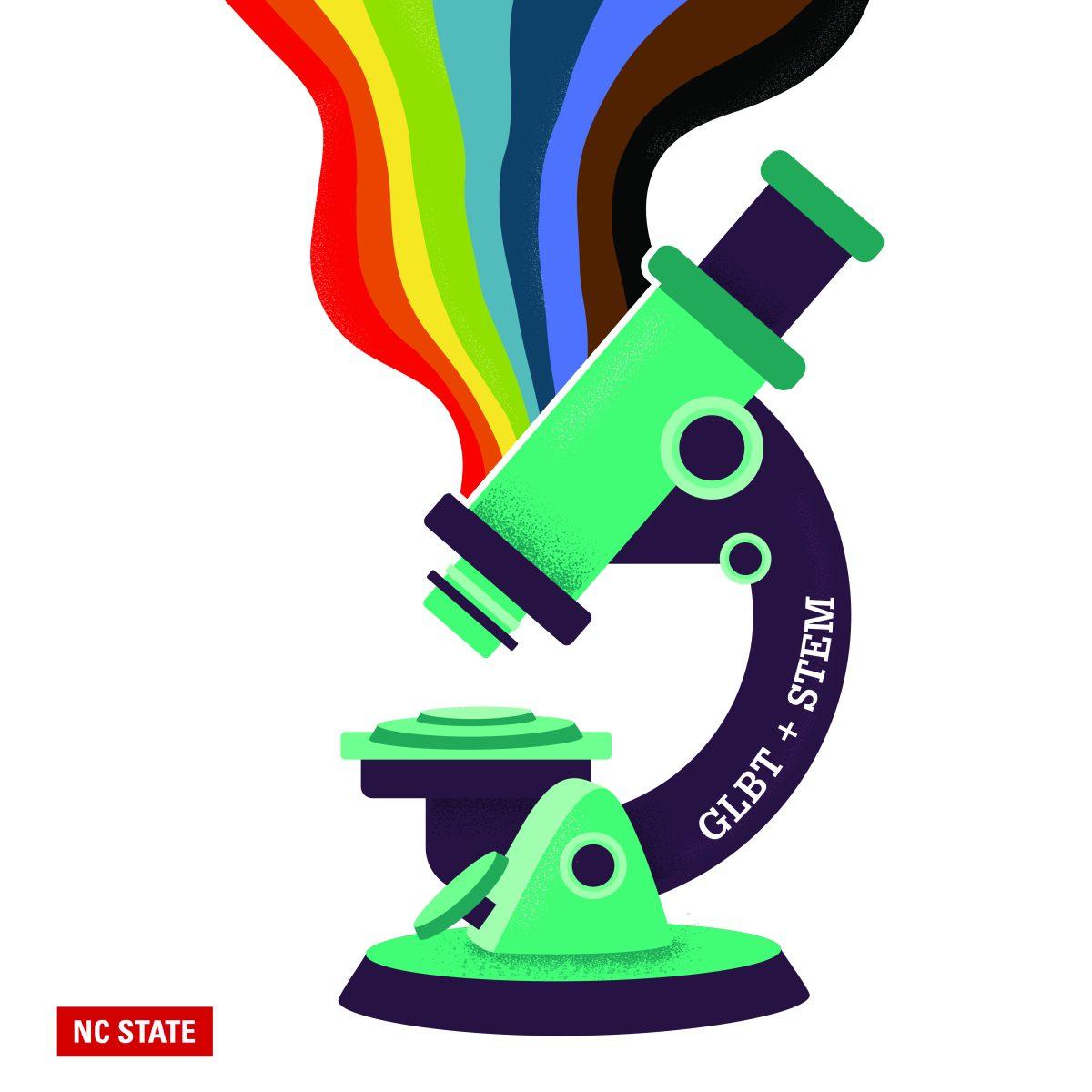A new partnership with the GLBT Center and several colleges has led to the creation of the first ever GLBT+ in STEM seminar series, in which students complete online modules on how to navigate and create inclusive STEM spaces.
Shaefny Grays, interim director for the Community for Diversity in the College of Natural Resources, partnered with Andy DeRoin, assistant director for the GLBT Center, in April 2020, after deciding to take action on the inclusion gap for the LGBTQ+ community in STEM at the college level.
“There are a lot of ways that our biases and stereotypes impact the way that we approach our work,” DeRoin said. “We want to take and learn from that and apply it to other groups, so we’re not making structures or technology or things that are potentially inherently homophobic or transphobic…It’s important because we’re potentially going to be out there creating technology and really amazing innovations in STEM, and how can we do that to help create the most inclusive and affirming world possible?”
Jamila Simpson, assistant dean for academic programs, student diversity and engagement in the College of Sciences, joined in for the planning process shortly after, partnering with representatives from the College of Engineering before the program began searching for participants in August.
“It’s really for all students who are interested in learning more about what it means to be GLBT in STEM, so that could mean that you share identities, or it could mean that you don’t share identities,” DeRoin said. “It’s open to everyone who is at all interested…undergraduates, graduates and everything.”
Grays said over 130 students filled out the initial interest form for the program, with 48 students enrolled in the program, which started mid-September and spans the length of the fall semester.
“I’m really excited about the community interest in support of the program,” Simpson said. “I’ve actually gotten a lot of feedback, even from alumni who didn’t have something like this when they were in school, and now they want to give back, and because we put a call out to faculty, staff, alumni to ask them if they want to participate in panels or join discussions.”
DeRoin and Grays said that, while the program has baseline requirements, ultimately the curriculum content is up to the discretion of the student, with many options available and a wide scope of topics. DeRoin said that the requirements for the GLBT+ in STEM program were designed to meet the requirements for the GLBT Student Advocate Program, which was also created this fall.
“They have to complete two GLBT-specific trainings that we worked on with [the GLBT Center],” Grays said. “Then they’ll do a GLBT Center event… Dr. Simpson and I are responsible for the STEM content, so we have six modules online. We want to be inclusive, we want it to be broad, so we have six topics and the student chooses which three they want.”
Grays said while she expects the virtual program to be repeated annually, she would also like to see a more application-based session be included in the spring semester as an extension of the initial one-semester program.
“I’m just excited that we have the opportunity,” Grays said. “I think we are starting with people who are committed, not just in title, not just on paper, but who will do the work because we genuinely want to change. So I’m just excited to see what it’ll do.”
To learn more, students can visit the GLBT Center website.








